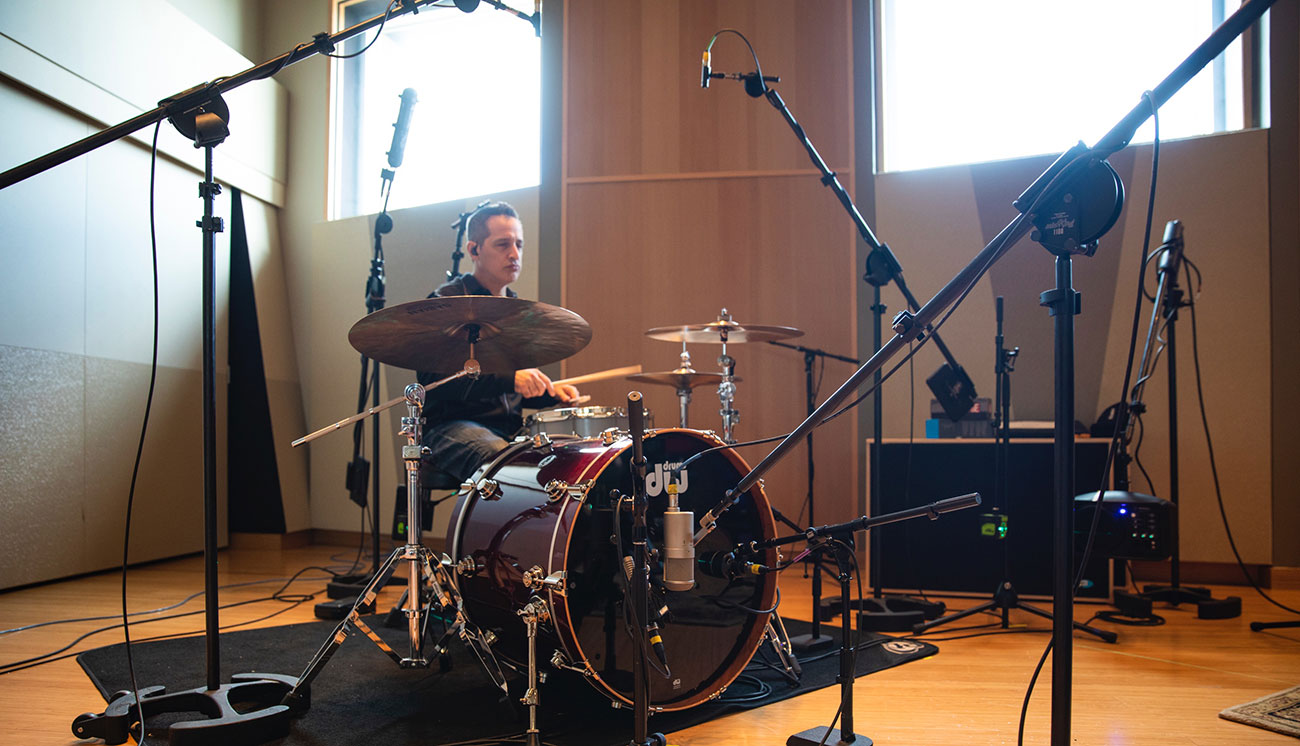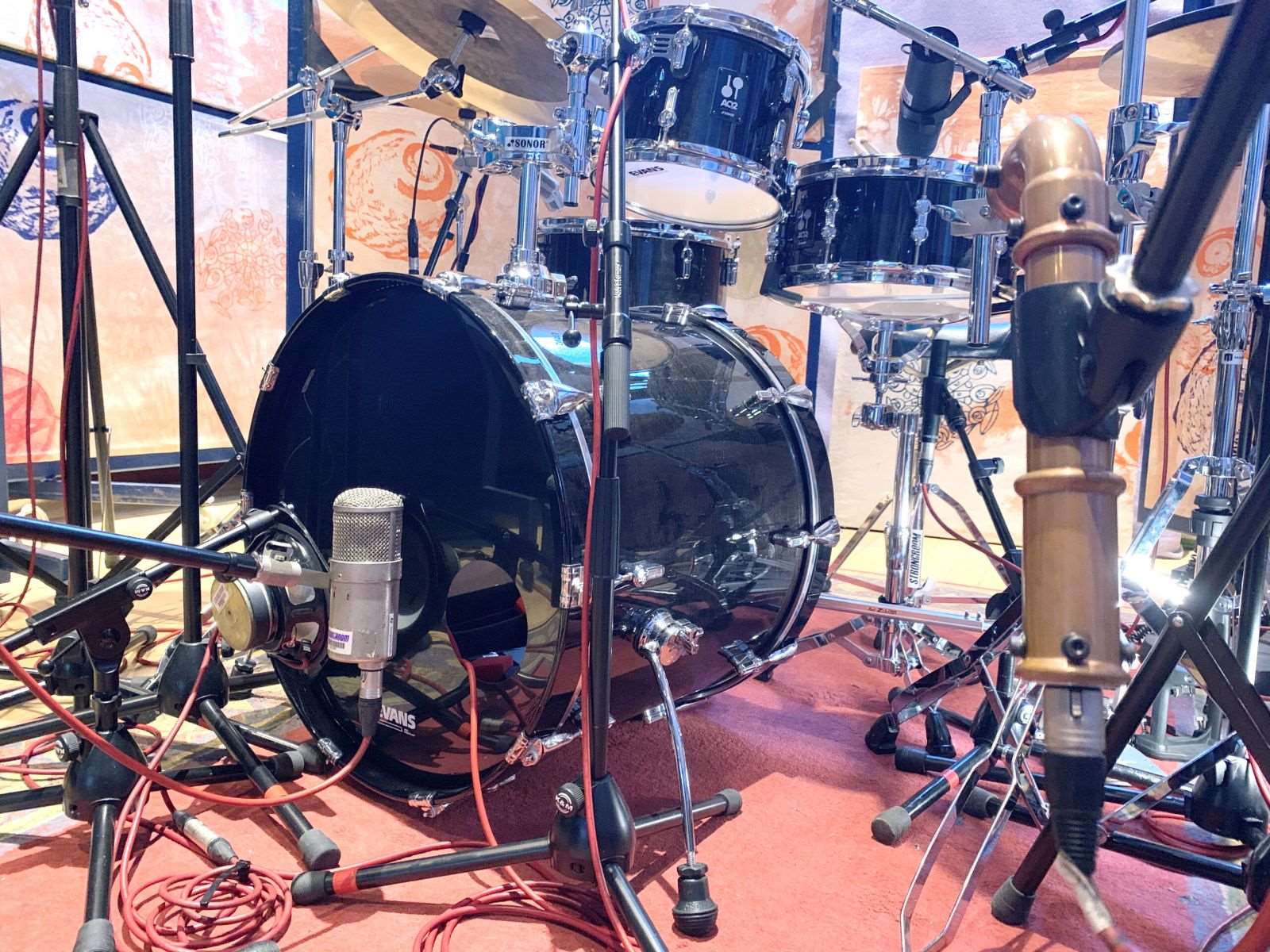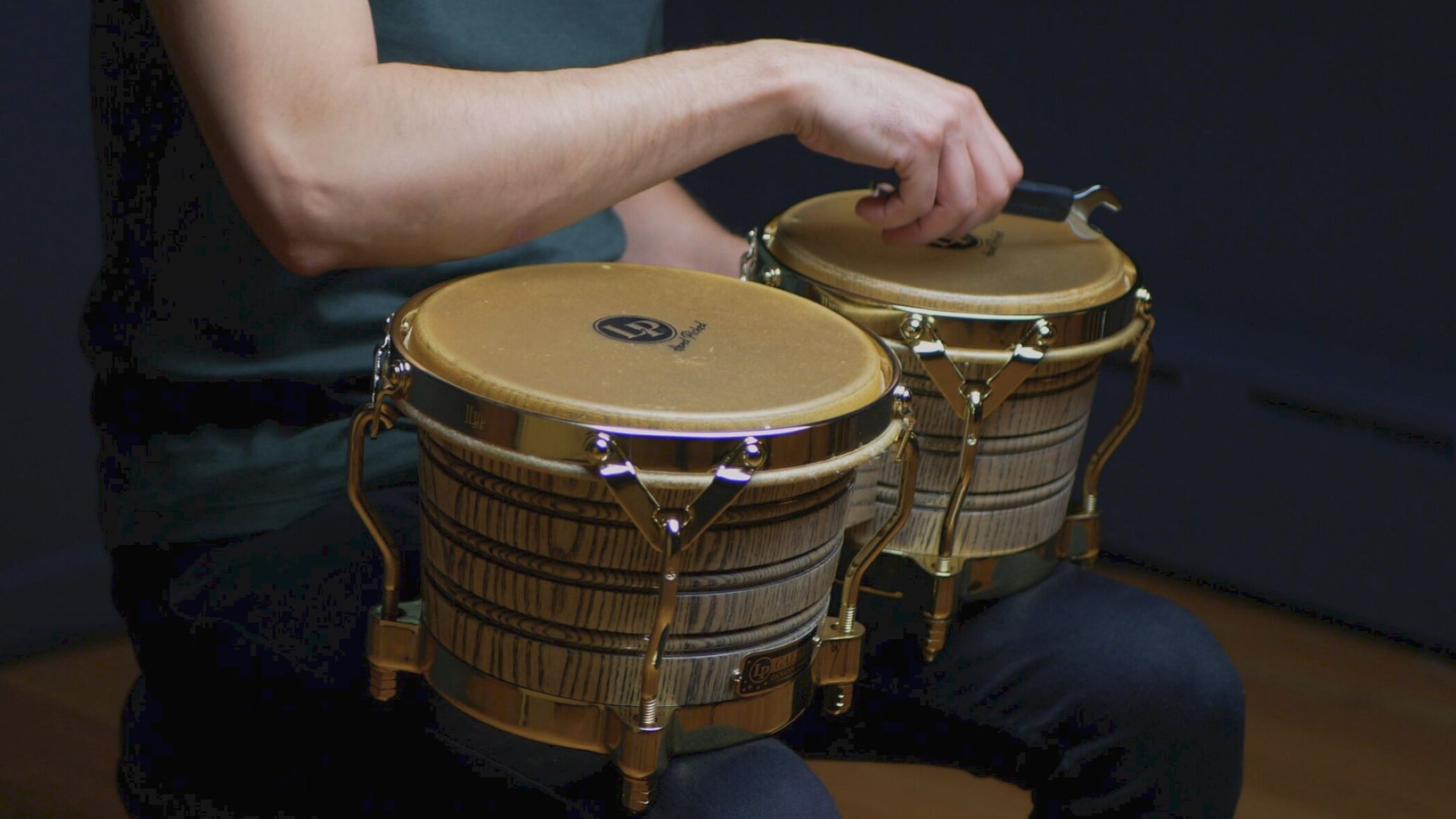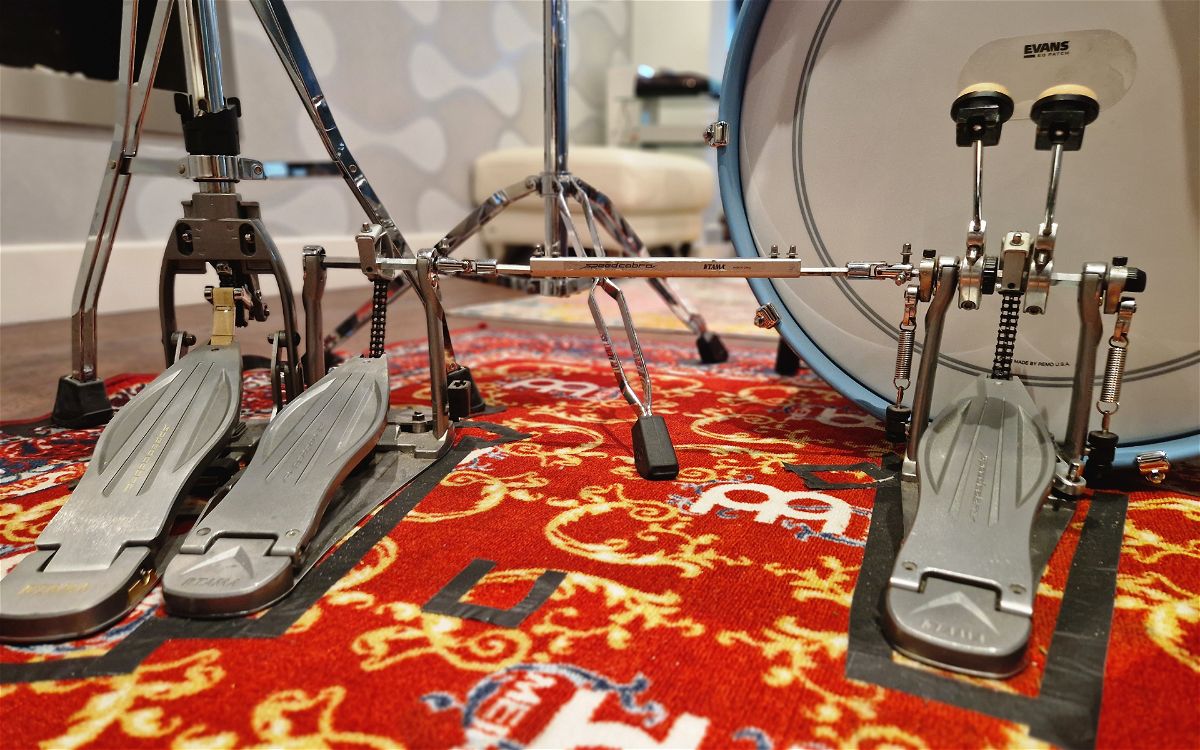Home>Instruments>Bass>How To Tune Marching Bass Drums


Bass
How To Tune Marching Bass Drums
Published: November 29, 2023
Learn how to tune marching bass drums with our comprehensive guide. Enhance your marching band's sound with proper bass drum tuning techniques.
(Many of the links in this article redirect to a specific reviewed product. Your purchase of these products through affiliate links helps to generate commission for AudioLover.com, at no extra cost. Learn more)
Table of Contents
- Introduction
- Understanding Bass Drums
- Selecting the Right Drumhead
- Tuning Tools and Materials
- Step 1: Preparing the Drum
- Step 2: Finger Tighten the Lugs
- Step 3: Adjust the Resonant Head
- Step 4: Adjust the Batter Head
- Step 5: Check the Pitch Balance
- Step 6: Fine-Tuning and Minor Adjustments
- Maintenance and Care Tips
- Frequently Asked Questions (FAQs)
- Conclusion
Introduction
Welcome to the world of marching bass drums! As a crucial component of a marching band’s percussion section, bass drums play a significant role in providing a powerful and rhythmic foundation to the ensemble’s sound. Whether you’re a drummer looking to improve your skills or a band director searching for guidance on tuning bass drums, you’ve come to the right place.
In this comprehensive guide, we will explore the ins and outs of tuning marching bass drums to achieve optimal sound quality and projection. Tuning can make a world of difference in the overall sound and impact of the drums, so it’s essential to understand the process and take the time to get it right.
While tuning can seem like a daunting task, especially for beginners, it’s a skill that can be learned and mastered with practice. By following the steps outlined in this article and utilizing the right tools and techniques, you’ll be able to unlock the full potential of your marching bass drums.
Before we dive into the specifics of tuning, let’s take a moment to understand the nature of bass drums and their significance in a marching band. Bass drums are typically large drums with a deep and booming sound that adds depth and power to the ensemble’s music. They provide the low-end foundation and help drive the rhythm, adding a sense of weight and impact to the overall sound.
Properly tuned bass drums not only enhance the musical experience for both the musicians and the audience but also ensure that the drums blend well with the rest of the ensemble. It’s crucial to achieve a balanced and coherent sound throughout the band, and having well-tuned bass drums is key to achieving that goal.
Now that we have a basic understanding of the importance of tuning bass drums, let’s move forward and dive into the step-by-step process. By the end of this article, you’ll be equipped with the knowledge and skills to tune your marching bass drums like a pro.
Understanding Bass Drums
Before we embark on the journey of tuning bass drums, it’s important to have a solid understanding of their construction and key components. A deeper understanding of how bass drums work will help us make informed decisions when it comes to tuning and achieving the desired sound.
Bass drums traditionally consist of a large drum shell, typically made of wood, and are available in various sizes. The size of the drum shell directly impacts the sound produced, with larger drums generally producing a deeper and more resonant tone.
One of the most important components of a bass drum is the drumhead. Bass drums usually have two drumheads – the resonant head and the batter head. The resonant head is typically thinner and is positioned on the resonant side of the drum. It produces the sustain and creates the drum’s overall tone. The batter head, on the other hand, is thicker and is played directly by the drumsticks. It produces the attack and controls the overall feel and response of the drum.
The tension of the drumheads is crucial in determining the pitch and tone of the bass drum. Higher tension will result in a higher pitch, while lower tension will produce a lower, deeper sound. Achieving the right balance of tension between the resonant head and the batter head is key to achieving the desired sound for your bass drum.
Another crucial aspect to consider is the resonance and sustain of the bass drum. The resonance refers to the length of time it takes for the sound to decay after striking the drum, while sustain refers to the length of time the drum produces a clear and audible tone. The right amount of resonance and sustain will depend on the musical context and personal preference, as different styles of music may require different characteristics from the bass drum.
Now that we have a solid understanding of the construction and key components of bass drums, we can move on to the next step – selecting the right drumheads for tuning.
Selecting the Right Drumhead
When it comes to tuning bass drums, selecting the right drumheads is crucial for achieving the desired sound and tone. The drumheads you choose will greatly influence the overall quality and projection of the bass drum.
There are various factors to consider when selecting drumheads for your bass drum. Here are some key points to keep in mind:
- Tension: Different drumheads have different tension characteristics. Some drumheads are designed to have a higher tension, resulting in a brighter and more focused sound, while others have a lower tension, providing a deeper and more resonant tone. Consider the tension you desire for your bass drum and select drumheads accordingly.
- Material: Drumheads can be made from a variety of materials, such as Mylar, coated Mylar, or synthetic materials. Each material has its own unique characteristics in terms of sound projection, durability, and sustain. Experiment with different materials to find the one that best suits your desired sound.
- Thickness: Drumheads come in various thicknesses, ranging from single-ply to double-ply. Thinner heads tend to produce more resonance and sustain, while thicker heads offer a controlled and focused sound. Consider the style of music you’ll be playing and the level of control you desire when selecting the thickness of your drumheads.
- Specialty Heads: Depending on your specific needs and preferences, you may also consider specialty drumheads for your bass drum. These can include heads with built-in dampening, tone control rings, or unique resonant features. Explore the range of specialty drumheads available to find one that suits your desired sound and desired level of customization.
It’s important to note that the selection of drumheads is a personal choice, and what works for one drummer or ensemble may not work for another. Don’t be afraid to experiment and try different combinations of drumheads to find the sound that best suits your style and musical context.
Once you have selected the appropriate drumheads for your bass drum, you are ready to move on to the next step in the tuning process – gathering the necessary tools and materials.
Tuning Tools and Materials
Before we begin the tuning process for bass drums, it’s essential to gather the necessary tools and materials. Having the right equipment will make the task easier and more efficient.
Here are the essential tuning tools and materials you’ll need:
- Tuning Key: A tuning key is an essential tool for adjusting the tension of the drumheads. It allows you to tighten or loosen the tension rods on the drum lugs. Make sure to have a reliable and properly-sized tuning key that fits the lugs of your bass drum.
- Drumstick or Mallet: Having a drumstick or mallet handy will allow you to tap the drumhead and listen for changes in pitch as you tune. This will help you make precise adjustments.
- Drumhead Lubricant: Drumhead lubricant can be applied to the bearing edge of the drumshell to ensure smooth tension rod movement and prevent binding. This can make the tuning process easier and more accurate.
- Dampening Materials: Depending on your desired sound and playing style, you may want to have dampening materials on hand. These can include foam strips, felt strips, or drum gel pads, which can be placed on the drumhead to control resonance and create a more focused sound.
- Tension Watch or Drumdial: While not essential, a tension watch or a drumdial can be helpful in ensuring consistent tension across all lugs. These devices measure the tension of each lug and allow for precise tuning adjustments.
- Tuning Chart or Pitch Reference: It’s always helpful to have a tuning chart or pitch reference available to guide you in achieving specific notes or intervals. This will ensure that all the drums in your ensemble are in tune and harmonize with each other.
Gathering these tools and materials before you start the tuning process will save you time and help you achieve more accurate results. With the right equipment at your disposal, you’ll be able to tune your bass drums with confidence and precision.
Now that we have our tools and materials ready, let’s dive into the step-by-step process of tuning marching bass drums.
Step 1: Preparing the Drum
Before diving into the actual tuning process, it’s crucial to properly prepare the bass drum. This step ensures that the drum is clean, stable, and ready for tuning. Here’s what you need to do:
- Clean the Drum: Start by cleaning both the drum shell and the drumheads. Use a soft, damp cloth to remove any dirt, dust, or debris from the drumhead surfaces. This will ensure a clean and clear tone when tuning.
- Inspect the Drumhead: Carefully inspect both the resonant head and the batter head for any signs of damage, such as tears, punctures, or excessive wear. If you notice any issues, it’s best to replace the drumhead before proceeding with the tuning process.
- Check Lug Screws: Verify that all lug screws are tightened securely. Loose lug screws can affect the tension and overall sound of the drum. Use a drum key to tighten any loose screws, ensuring they are snug but not overly tightened.
- Apply Lubricant: Apply a small amount of drumhead lubricant to the bearing edge of the drumshell. This will ensure smooth tension rod movement and prevent binding. Spread the lubricant evenly using your fingers or a clean cloth.
- Check Drum Collar: If your bass drum has a drum collar or rim protector, make sure it is properly positioned and securely attached to the drum. This will help protect the drumhead edges and maintain stable tension.
By preparing the drum in this manner, you’ll ensure that you have a clean and stable surface to work with, promoting better tuning results. With the drum properly prepared, you’re now ready to move on to the next step – finger tightening the lugs.
Step 2: Finger Tighten the Lugs
Once you have prepared the bass drum, it’s time to begin the actual tuning process. The first step is to finger tighten the lugs. This step helps ensure an even and balanced initial tension across the drumhead. Here’s how to do it:
- Place your drum in a stable and comfortable position, either on a drum stand or on the ground with a cushion underneath.
- Begin by locating one lug on the drumhead – this will serve as your starting point.
- Using your thumb and index finger, start tightening the lug by turning it in a clockwise direction. Use a gentle and consistent pressure with your fingers to achieve even tension.
- Move in a star pattern, tightening each lug in a clockwise direction in a crisscross pattern. This will help distribute the tension evenly across the drumhead.
- Continue finger tightening each lug until they are all snug. Be mindful not to overtighten at this stage, as we will be making further adjustments in the subsequent steps.
By finger tightening the lugs, we establish a baseline tension across the drumhead. This ensures that the tension is evenly distributed, setting the stage for the rest of the tuning process.
Once you have finger tightened all the lugs, you’re ready to move on to adjusting the resonant head in the next step.
Step 3: Adjust the Resonant Head
With the lugs finger tightened, it’s time to focus on fine-tuning the tone of the bass drum by adjusting the tension of the resonant head. The resonant head plays a crucial role in shaping the overall sound and sustain of the drum. Follow these steps to adjust the resonant head:
- Tap the center of the resonant head with a drumstick or mallet and listen to the pitch produced. This will give you a reference point to work with.
- Starting with the lug opposite to your starting point, use a drum key to turn the lug in a clockwise direction by about a quarter or a half turn.
- Move to the next lug in a clockwise direction and repeat the tuning process. Tap the center of the drumhead again to assess the pitch. Make adjustments as needed by tightening or loosening the lug.
- Continue this pattern, moving in a star or crisscross pattern, tuning each lug and tapping the drumhead to gauge the pitch.
- Listen for a uniform and balanced pitch across the drumhead. Aim to achieve a clear and sustained tone without any noticeable discrepancies in pitch.
As you make adjustments to the tension of the resonant head, pay attention to any changes in the pitch and sustain. Fine-tuning the resonant head will help you achieve the desired tone and balance for your bass drum.
Remember to make small and gradual adjustments rather than large, sudden changes. This will allow you to fine-tune the drumhead tension more effectively.
Once you are satisfied with the overall sound and pitch balance of the resonant head, you’re ready to move on to adjusting the batter head in the next step.
Step 4: Adjust the Batter Head
After fine-tuning the resonant head, it’s time to focus on the batter head of your bass drum. The batter head is the drumhead that you strike directly with your drumsticks, and its tension greatly affects the attack, feel, and response of the drum. Follow these steps to adjust the tension of the batter head:
- Tap the center of the batter head with a drumstick or mallet and listen to the pitch produced. This will serve as your starting point.
- Starting with the lug opposite to your starting point, use the drum key to turn the lug in a clockwise direction by about a quarter or a half turn.
- Move to the next lug in a clockwise direction and repeat the tuning process. Tap the center of the drumhead again to assess the pitch. Make adjustments as needed by tightening or loosening the lug.
- Continue this pattern, moving in a star or crisscross pattern, tuning each lug and tapping the drumhead to gauge the pitch.
- Listen for a balanced and consistent pitch across the batter head. Aim for a clear and focused sound without any noticeable discrepancies in pitch.
As with adjusting the resonant head, make small, gradual adjustments to the tension of the batter head. This will allow you to fine-tune the sound and feel of the drum more effectively.
Your goal is to achieve a batter head tension that complements the tone and sustain of the resonant head. These two drumheads work together to create the desired sound characteristics for your bass drum.
By adjusting the tension of the batter head, you can control the attack, response, and overall feel of the drum. Experiment with different tensions to find the sweet spot that suits your playing style and musical context.
Once you’re satisfied with the tension and pitch balance of the batter head, it’s time to move on to the next step – checking the pitch balance between the two drumheads.
Step 5: Check the Pitch Balance
After tuning both the resonant head and the batter head, it’s crucial to check the pitch balance between the two drumheads. The pitch balance ensures that the bass drum produces a cohesive and harmonious sound. Follow these steps to check the pitch balance:
- Tap the center of both the resonant head and the batter head with a drumstick or mallet. Listen to the pitch produced by each drumhead.
- Compare the pitches of the two drumheads. Ideally, you want the pitch of the resonant head to be slightly lower than the batter head, creating a clear and defined tone.
- If the resonant head is significantly higher or lower in pitch than the batter head, make small adjustments to the tension of the respective drumheads.
- Make slight adjustments to the tension of the resonant head or the batter head as needed, using the drum key. Tap the center of each drumhead and compare the pitches again until you achieve a balanced and cohesive sound.
By checking the pitch balance between the resonant head and the batter head, you ensure that both drumheads work in harmony, enhancing the overall sound and projection of the bass drum. A well-balanced pitch allows for a more resonant and full-bodied sound.
Remember that achieving the perfect pitch balance may require some trial and error. Don’t be afraid to make small adjustments and listen carefully to the changes in sound.
Once you have achieved a satisfactory pitch balance between the two drumheads, you’re almost done with the tuning process. However, there is one more step to consider – fine-tuning and making minor adjustments.
Step 6: Fine-Tuning and Minor Adjustments
With the pitch balance between the resonant head and the batter head in check, it’s time to focus on fine-tuning the bass drum to achieve the desired sound and feel. This final step involves making minor adjustments to perfect the tone and overall playability of the drum. Here’s how:
- Tap various areas of both the resonant head and the batter head with a drumstick or mallet. Listen carefully to the pitch and observe any inconsistencies or areas that require further adjustment.
- Focus on any lugs that may be producing noticeably different pitches or areas that may sound uneven or dull. These areas may require slight adjustments.
- Make small quarter or half turns to the tension rods of the corresponding lugs using the drum key. This will help to fine-tune the tension and bring the drum into balance.
- Tap the drumhead in those areas again and listen for improvements. Repeat this process until you achieve a uniform and well-balanced pitch across the drumhead surface.
- Pay attention to the overall feel and response of the drum while making these minor adjustments. Aim to achieve a comfortable and controlled bounce off the drumhead.
During the fine-tuning process, it’s important to trust your ears and make adjustments based on the sound and feel of the drum. Every drummer may have slightly different preferences and playing styles, so take your time and experiment until the drum feels and sounds just right to you.
Remember, small adjustments can make a significant difference in the overall tone and playability of the bass drum. Take the time to fine-tune and make minor adjustments to achieve your desired sound.
Once you are satisfied with the fine-tuning and minor adjustments, you have successfully tuned your marching bass drum! It’s now ready to deliver optimal sound quality and projection in your performances.
Now that we’ve gone through the tuning process, let’s move on to some maintenance and care tips to keep your bass drum in top shape.
Maintenance and Care Tips
Proper maintenance and care are vital to ensure the longevity and performance of your marching bass drums. Here are some tips to keep them in top shape:
- Regular Cleaning: Clean the drumheads and shell regularly using a soft cloth to remove dust, dirt, and residue. This will maintain the integrity of the drumheads and keep them sounding their best.
- Protective Cases: Invest in high-quality protective cases or bags to safeguard your bass drums during transport and storage. Cases with padding and reinforced corners provide excellent protection against bumps and impacts.
- Avoid Extreme Temperatures: Bass drums are sensitive to temperature fluctuations. Avoid exposing them to extreme heat or cold as it can cause damage to the drumheads and shell. Store them in a climate-controlled environment whenever possible.
- Tension Rod Maintenance: Periodically inspect the tension rods for any signs of wear or bending. Replace any damaged or worn-out tension rods to ensure proper tensioning and tuning stability.
- Proper Storage: When not in use, store your bass drums in a clean and dry environment. Avoid storing them on the ground or in areas prone to moisture, as it can lead to warping or damage to the drum shell.
- Head Replacement: Monitor the condition of the drumheads and replace them as needed. Over time, drumheads can wear out, lose their tonal quality, or develop wrinkles. Regularly inspect and replace them to maintain optimal sound.
- Tuning Check: Periodically check the tuning of your bass drums, especially before important performances or rehearsals. Drumheads can naturally lose tension over time, so it’s essential to retune them to achieve the desired sound.
- Avoid Excessive Force: When playing your bass drum, avoid excessive force or hitting the drumhead near the edges. This can lead to premature wear and tear or even damage the drumhead.
By following these maintenance and care tips, you can ensure that your marching bass drums stay in excellent condition and continue to deliver outstanding sound quality for years to come.
Now let’s address some frequently asked questions about tuning bass drums.
Frequently Asked Questions (FAQs)
Here are some commonly asked questions about tuning bass drums:
- 1. How often should I tune my bass drum?
- 2. How tight should I tune my bass drum?
- 3. Should I use any dampening techniques on my bass drum?
- 4. Can I tune my bass drum without a drum key?
- 5. How can I tell if my bass drum is in tune?
- 6. How do I prevent my bass drum from sounding too “boomy”?
It’s a good practice to check and tune your bass drum before every rehearsal or performance. However, if the drumhead tension remains stable and there are no noticeable changes in sound, retuning may not be necessary every time.
The tightness of your bass drum depends on various factors such as personal preference, musical style, and the desired sound. Experiment with different tensions to find the level that produces the right balance of tone, sustain, and projection for your needs.
Dampening techniques can be used to control the resonance and focus of the bass drum. Experiment with different dampening materials such as foam strips or drum gel pads to achieve the desired sound for your musical context.
A drum key provides convenience and accuracy when tuning, but it’s possible to make basic adjustments with your fingers. However, for more precise and consistent results, it’s recommended to have a drum key on hand.
Tap the center of the drumhead and listen for a clear, sustained, and balanced pitch. Use your ears as the primary guide to judge if the drum is in tune or make any necessary adjustments.
To control excessive resonance and achieve a more focused sound, you can experiment with dampening techniques using foam strips, felt strips, or drum gel pads. Placing these materials strategically on the drumhead can help reduce the “boomy” overtones.
Remember, tuning bass drums is a skill that requires practice and experimentation to find the right sound. Don’t hesitate to try different approaches and techniques to achieve your desired results.
Next, let’s conclude our guide on tuning marching bass drums.
Conclusion
Congratulations! You’ve reached the end of our comprehensive guide on tuning marching bass drums. By following the step-by-step process outlined in this article, you now have the knowledge and skills to tune your bass drums like a pro.
Remember, tuning bass drums is an art that requires practice, patience, and a keen ear. Don’t be discouraged if it takes a few tries to achieve the desired sound. With time and experience, you’ll master the art of tuning and be able to unlock the full potential of your bass drums.
Properly tuned bass drums will not only enhance your musical experience but also contribute to the overall sound and impact of your band. Take the time to experiment with different tensions, drumhead materials, and dampening techniques to find the perfect balance for your desired sound.
Additionally, regular maintenance and care are essential to keep your bass drums in top shape. Clean and inspect your drumheads, protect your drums during transport, and replace worn-out parts as needed. By taking these steps, you’ll ensure that your bass drums deliver optimal performance and longevity.
Lastly, remember that tuning is not a one-time task. Always check and adjust the tension of your bass drums before rehearsals or performances, as drumheads can naturally lose tension over time.
Now that you have the knowledge and tools to tune your bass drums, go ahead and bring the thunderous rhythm to your marching band. Enjoy the process, trust your ears, and make music that resonates with power and precision.
Happy drumming!











